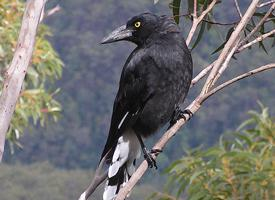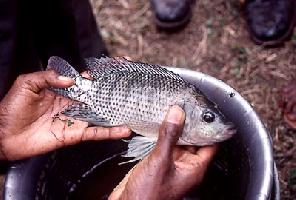
Súlyok és méretek
| Hossz | 48 cm |
|---|
Állatleírás
The Pied Currawong (Strepera graculina) is a medium to large-sized bird that is native to eastern Australia, including Tasmania. This striking species belongs to the Artamidae family, which also includes other well-known birds such as the Australian Magpie and the butcherbirds. The Pied Currawong is highly adaptable and can be found in a variety of habitats ranging from rainforest edges to suburban gardens.One of the most distinctive features of the Pied Currawong is its appearance. Adults typically have a predominantly black plumage with flashes of white on their wings and tail. The contrast between the black and white is particularly noticeable in flight. Their bright yellow eyes are another characteristic trait, adding to their striking look. They possess strong, hooked beaks designed for a diet that includes a variety of foods, from fruits and seeds to small animals and insects.
Pied Currawongs are approximately 48 cm in length, making them considerably larger than many other songbirds. Their size, along with their powerful build, allows them to dominate smaller bird species in their territory. The birds are also known for their loud, distinctive calls, which can range from melodious to somewhat eerie. These calls are a common sound in their habitats, especially during dawn and dusk.
The breeding season for Pied Currawongs occurs mainly in spring and early summer. During this time, they build their nests in tall trees, preferring locations that offer some level of concealment. The nests are constructed from sticks and lined with softer materials. Typically, the female lays between two to five eggs, which she incubates for around three weeks. Both parents are involved in feeding and raising the young, which leave the nest about a month after hatching.
Pied Currawongs play a significant role in their ecosystems. They are known to be both predators and scavengers. As predators, they help control populations of various insects and small animals. However, they can also impact populations of smaller bird species by preying on their eggs and nestlings. In urban areas, Pied Currawongs have adapted well to human presence, often being seen foraging for food in gardens and parks.
Their adaptability to different environments has allowed the Pied Currawong population to remain stable, and they are not currently considered to be at risk. However, their presence in urban areas has led to conflicts with humans, particularly because of their predation on other bird species and their tendency to gather in large, noisy groups.
In conclusion, the Pied Currawong is a fascinating and adaptable bird, with a striking appearance and a wide range of vocalizations. Its ability to thrive in a variety of habitats, from dense forests to urban areas, highlights its versatility. Despite the challenges it faces in coexisting with humans and other wildlife, the Pied Currawong remains an integral part of Australia's biodiversity.
Hasonló állatok
Új állatfotók
Top 10 állat
- Dolphin gull (Leucophaeus scoresbii)
- Diana monkey (Cercopithecus diana)
- Japanese macaque (Macaca fuscata)
- Galápagos tortoise (Geochelone nigra complex)
- Stone loach (Barbatula barbatula)
- Moustached guenon (Cercopithecus cephus)
- Russian tortoise (Testudo horsfieldii)
- Common house mosquito (Culex pipiens)
- Japanese spider crab (Macrocheira kaempferi)
- Giant peacock moth (Saturnia pyri)


